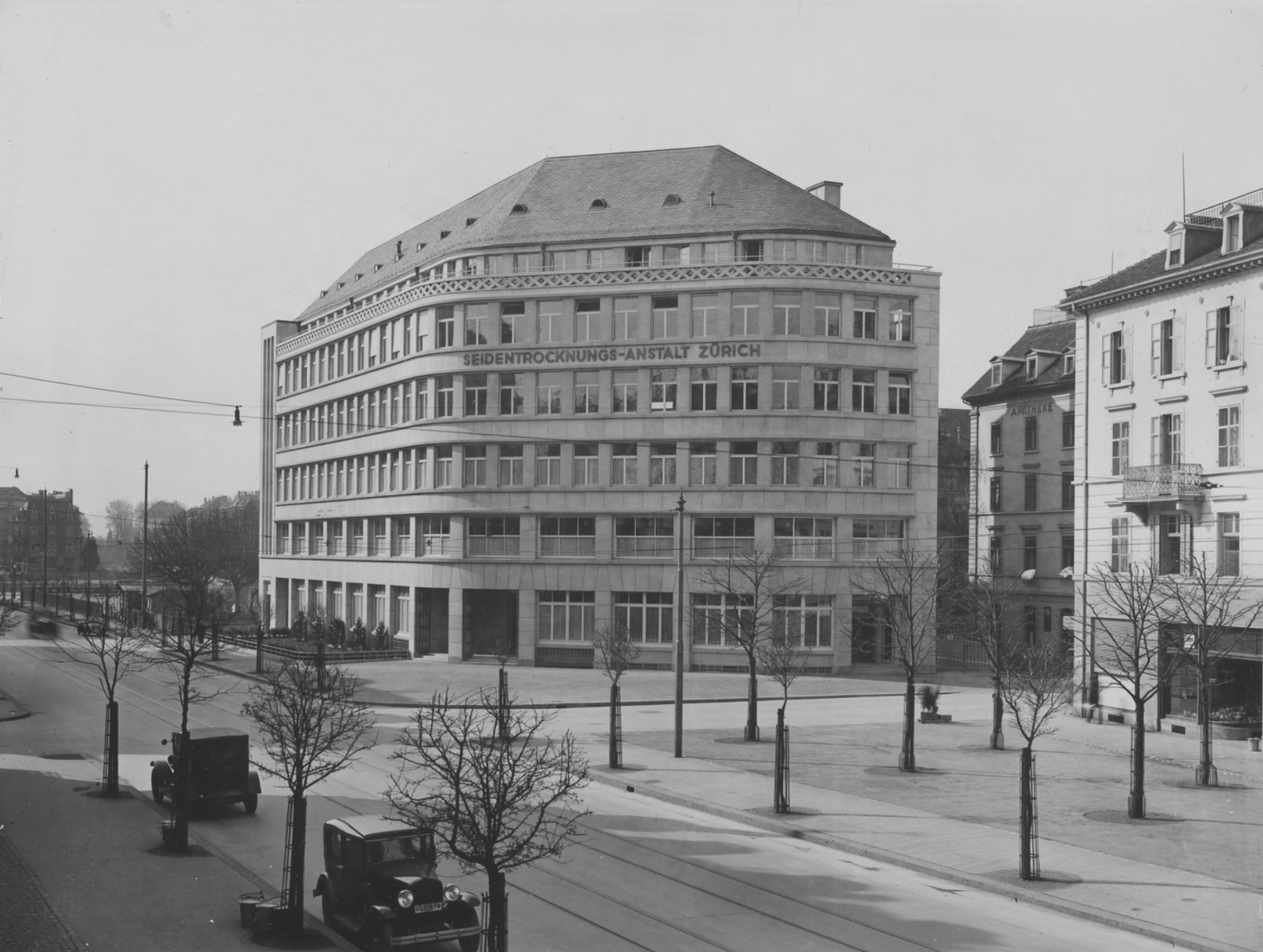2021/8/18
Founded in 1846 and originally known as the “Seidentrocknungsanstalt Zurich” (Silk Con-ditioning Institute), TESTEX is one of the oldest companies in Zurich. The institute’s core business was determining the commercial weight of raw silk. The desire to extend the field of activity beyond the conditioning of silk was expressed for the first time as early as the 1850s, and from 1872, the institute not only checked the moisture and the weight of the silk, but also the fineness and the strength of the silk fibres. In 1932 the company moved into its new headquarters at Gotthardstrasse 61, where it is still located today. The second half of the 20th century saw the gradual decline of the silk industry, which re-quired a transformational process. Testing was extended to other fibres and the Silk Con-ditioning Institute was renamed to TESTEX in 1970. Various measures were initiated in the 1980s with the aim of raising the profile of the company beyond the silk industry. The goal was to win over potential customers even from outside the Swiss silk industry and to establish TESTEX as an independent, neutral Swiss textile testing institute. Investment focused on testing equipment, and by the mid-1980s the range of tests covered fibres, yarns and textile fabrics such as materials, finished products and semi-finished products made from a variety of raw materials. They could be tested according to national and in-ternational standards.

TESTEX’s transformation into a leading independent testing institute for human ecology began in the early 1990s. The media had begun to report on harmful substances in cloth-ing due to the chemicals used in textile production. At this point TESTEX had already been testing textiles externally for substances such as pesticides. A lack of existing legal regula-tions combined with an increasing demand from consumers for skin friendly textiles led to the creation of the STANDARD 100 by OEKO-TEX® certification for textiles tested for harmful substances, as well as the founding of the OEKO-TEX® Association in 1992 which TESTEX joined the following year. In the 1990s turnover was still highest in Switzerland followed by Europe, but a strong shift towards the Asian market began from this time onwards and the first local branch office was opened in Hong Kong in 1995.
The developments of the textile industry towards a more sustainable future have also played a big role in the evolvement of textile testing methods in recent years. Better norms and added parameters have made textile testing techniques more precise. In 2018 TESTEX added GMO cotton testing to its portfolio and it is constantly involved in R&D projects, including life cycle assessment, sludge and wastewater method development, and certification of recycled textiles.
In 2019 TESTEX embarked on a pilot project to assess the life cycle of an OEKO-TEX® certi-fied t-shirt together with one if its customers and Quantis, a company specialized in guid-ing top organizations to define, shape and implement intelligent environmental sustaina-bility solutions. The goal of the collaboration was to be able to calculate the t-shirt’s car-bon footprint — that is, the amount of carbon dioxide or carbon dioxide-equivalent gen-erated per facility and product from the data provided by the producers during the OEKO-TEX® certification process.
OEKO-TEX® has continued the partnership with Quantis and taken the project to the next level by creating a screening LCA tool to allow facilities to measure and report on their environmental impacts. The tool’s output gives facilities first insights into not only carbon emissions but also water usage at the facility level and per kg of material produced. It calculates impacts by production process step vs. impacts generated outside a facility’s direct influence, such as raw material production and transportation. This enables facili-ties to identify the biggest opportunities for carbon emission and water reductions - whether to change materials purchased or improve operations. The tool, which is current-ly in a pilot phase, will contribute to building a benchmark and one of the most robust climate impact databases in the industry.
A variety of modern testing equipment is available for both physical textile testing and analytical tests. The most modern and up-to-date testing equipment and software now allows laboratory staff to process their results competently at home and to control devic-es remotely, which has been an important part of TESTEX’s digitization process.
The history of the Zurich Silk Conditioning Institute and TESTEX reflects 175 years of the silk and textile industry, as well as the social change in Switzerland and beyond. The com-pany has experienced calm waters, heydays and times of crisis in equal measure. It con-tinues to exist because it has changed constantly, reinventing itself when necessary and remaining faithful to its core mission of testing textiles. Today TESTEX focuses on a holis-tic approach, offering its customers complete solutions to successfully take on the sus-tainability challenges that the fashion industry faces today.



Authority in Charge: China National Textile and Apparel Council (CNTAC)
Sponsor: China Textile Information Center (CTIC)
ISSN 1003-3025 CN11-1714/TS
© 2026 China Textile Leader, all rights reserved.
Powered by SeekRay